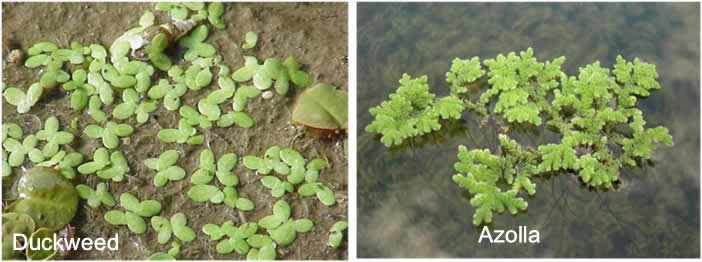Rehabilitating a pond
Things have improved since we took over 7 years ago, but there's still and endless list of improvements needed.
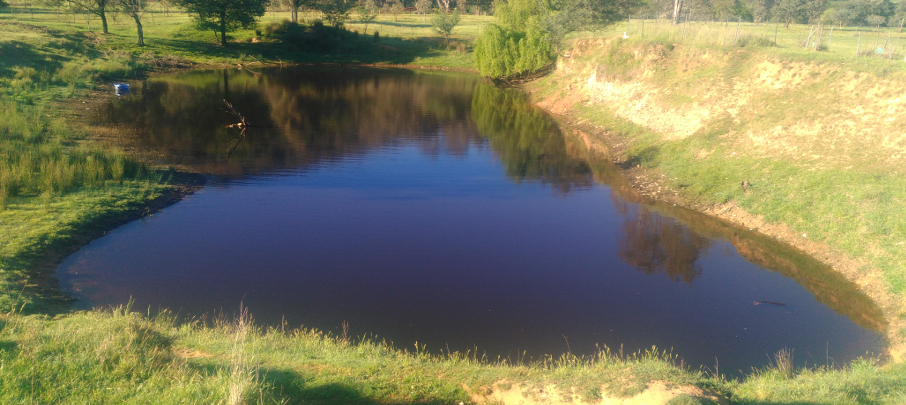
Early photo of pretty bare pond
One project is the goose pond. Not really a pond, it's a dry-dredgehole that exposes the water table. Over winter it fills up as the water table gets topped up by the winter rains, and then it slowly recedes until February. Most years its either a dry claypan, or two tiny soup bowls of toxic water. When the drought was in play a couple of years back we had a toxic algal bloom that killed some of the geese and who knows what wild-life.
Seven years ago the paddock was bare. Mining spoil mounds baked over summer and killed off any grass struggling to grow. No trees for shade. The walls of the mining pit were crumbling with regular collapses.
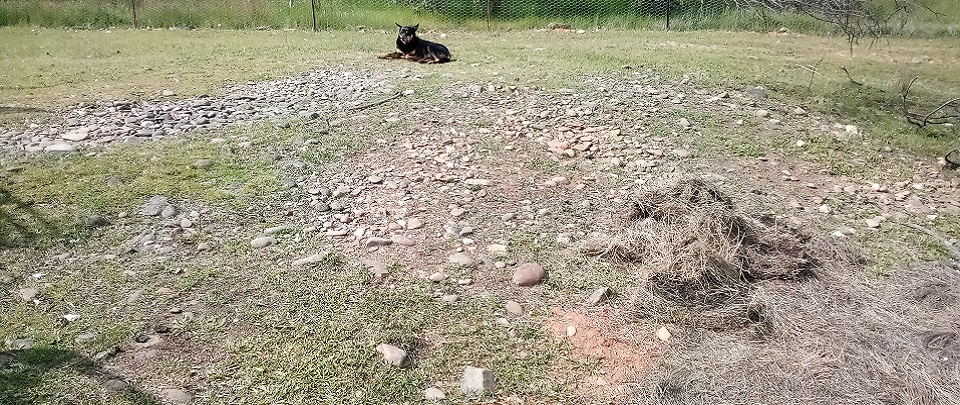
Hard to get anything to grow in this
The pond isn't the hero of this video! But if you can ignore the wailing lamb you can see how the area looked before any improvements. Oct 2019
We had a lot of failures planting trees in that paddock, but eventually we had some success. And slowly I have been building up a layer of topsoil around the crater and actually getting some growth happening. Long-term I want some tall trees on the north side of the crater to provide some long shadows and keep the sun off the pond. It won't stop the water table dropping over summer, but it will at least reduce direct evaporation and keep the water cooler.
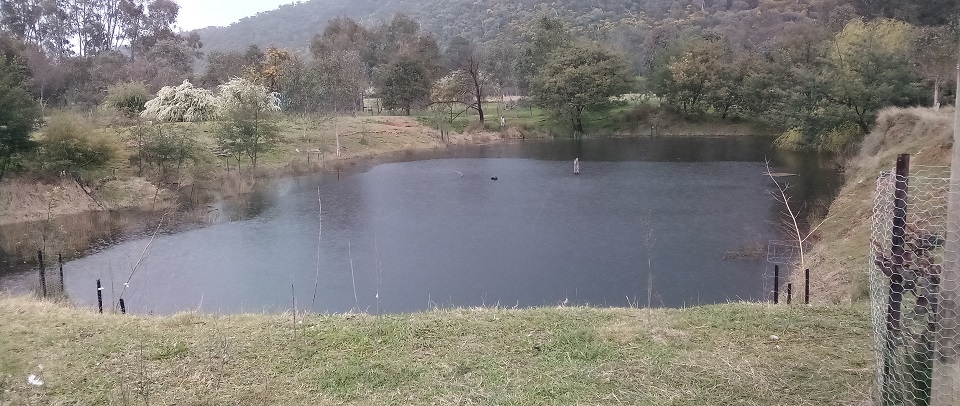
Pond as at September 2022
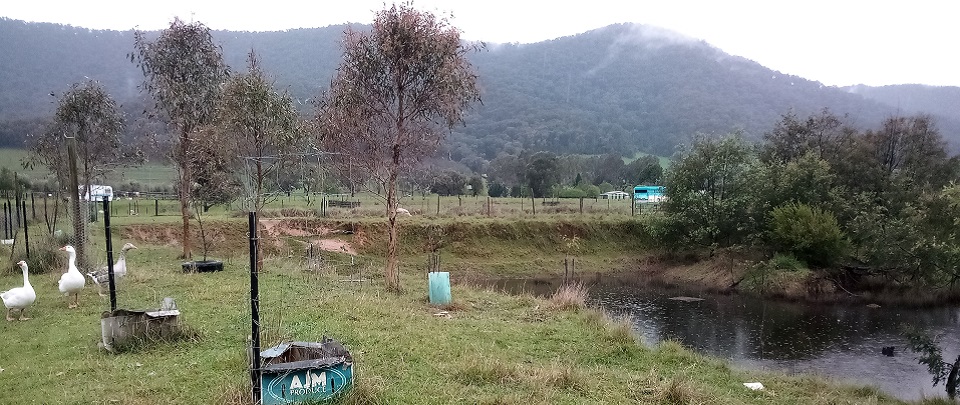
This looks at the same area covered in the video above. Big difference!
In the goose compound I planted far too many trees. This was done to provide a thick canopy above that area, so predator birds had a more difficult time dive-bombing the geese, chickens and gosling/chicks. These trees are now mature, and provide a lush, shady grove to avoid the peak summer sun. Most of the trees are fruit bearing, so they drop fruit for the poultry. Its a good arrangement.
So, progress is being made. And now I'm starting to look at the water quality. Last year I moved a 5000 litre tank into the goose paddock. It fills over winter, so I should have enough clean drinking water to see them through even a really dry summer.
But the pond itself...? The pond covers quite a large area, maybe 1500 square metres, but its deceptive...some parts of it are less than 10 cm deep. The geese enthusiastically dump massive amounts of nutrients into the water, so its not healthy. It's almost bare of water plants, a bad sign. It needs water plants, and I think it also needs an extraction/filter/return system. (I've got a plan for that, but its another conversation.) So far I have had nothing but failure with water plants. I've tried transplanting expensive pots of plants from a nursery, foraged local reeds from roadside feral runoff ponds, and bulrushes too. I've collected buckets of seeds, but nothing has taken. And I've had a few goes at floating plants. I've purchases azolla and after growing it for a few months in buckets put it out into the goose pond, but it died off within days from the cold, and I suspect the geese ate it too..
Too cold, you say. Azolla is a warmer, northern plant.
Yes, maybe. But there is also duckweed. When we lived in Melbourne, one year we collected some tadpoles from quite horrible trapped, runoff water along the railway line. They grew and colonized our garden. But inadvertently I also collected some duckweed, and it thrived. I would argue if it can do OK in Melbourne I should be able to get some results here., so I am on the hunt for locally acclimatized floating water plants.
If you see me trudging along the runoff gutters along the Great Alpine Road, that's what I am doing.
But if you know of anyone in the area who has a green, lush pond, tell them to talk to me!
